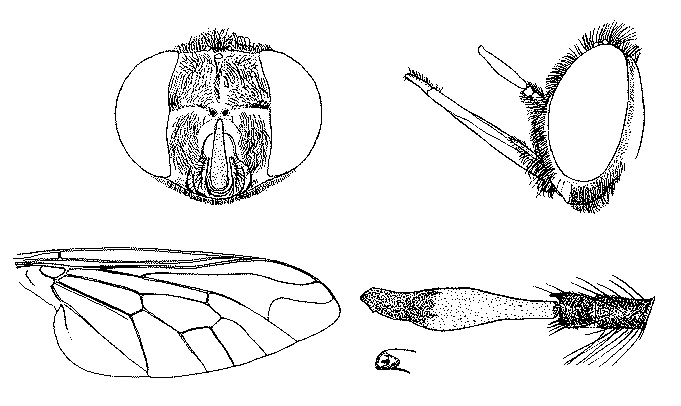Here we go:
I have educated myself and found that you have to look at the position of the antennae.
The suspects in the subfamily are:
Callynthrophora: Frons inflated; antennae inserted just above oral rim; flagellum clubbed
Hyperusia: Antennae inserted immediately above oral rim; no facial brush of stiff hairs
Corsomyza: Antennae inserted well above oral rim; facial brush of stiff hairs dense and obvious
The shape of the antennae tip can be different within a genus, but not the position of the antennae.
After this excercise I'd clearly go with
Hyperusia which is a genus with sexual dimorphism.
key to
Hyperusia:
Head without frons inflated or face long and tumid; interradial crossvein usually absent (2 submarginal cells)
Oral rim not raised into a prominent ridge; plumula present; hair tuft present behind metathoracic spiracle
Antennae inserted immediately above oral rim; no facial brush of stiff hairs
Body with dense adpressed scale-like hairs; cell cup closed or only narrowly open, anal lobe broad, alula well developed; proboscis much shorter than head and thorax combined
Hyperusia Bezzi
This genus is similar in appearance to Corsomyza but with a different distribution pattern. The species are found principally outside the winter-rainfall region of southern Africa, where Corsomyza spp. predominate, in tropical southern Africa.
Distribution: Afrotropical Region. South Africa, Namibia, Botswana: 8 species
KTP is a late summer rainfall region

Here a set of figures

- Hyperusia luteifacies and H soror.jpg (97.75 KiB) Viewed 427 times
ExFmem, if you don't mind the effort, you can have a look at your original image and try to see some more detail of the head and the wing.
